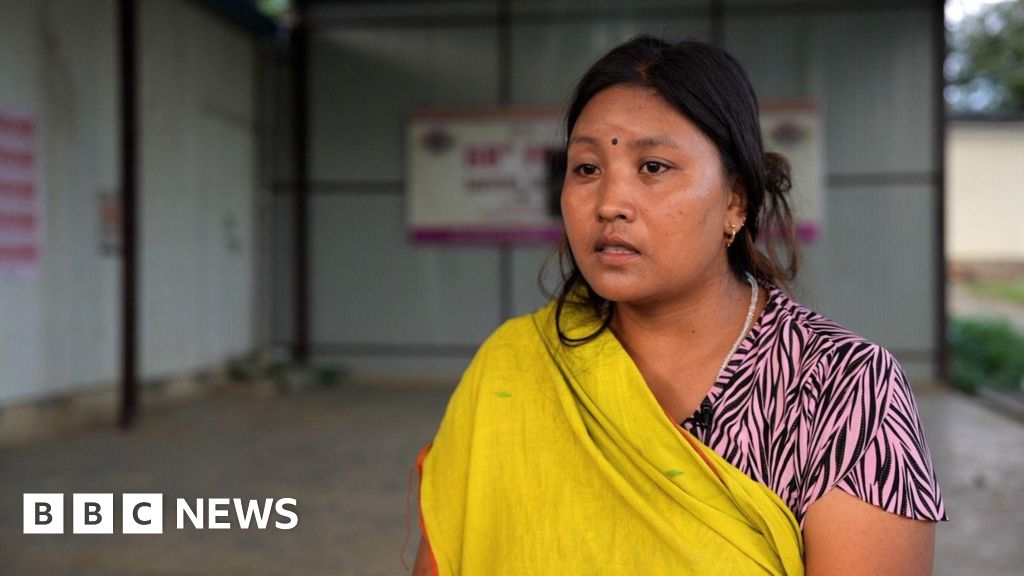 Tirtha Prasad Saikia, Director of the North-East Affected Area Development Society, speaks to IPS at the IUCN World Conservation Congress in Abu Dhabi, UAE. Credit: Diwash Gahatraj/IPS
Tirtha Prasad Saikia, Director of the North-East Affected Area Development Society, speaks to IPS at the IUCN World Conservation Congress in Abu Dhabi, UAE. Credit: Diwash Gahatraj/IPSABU DHABI, October 13 (IPS) - As global conservation leaders gather in Abu Dhabi for the IUCN World Conservation Congress, communities in the hills of Darjeeling, thousands of kilometers away, are still counting their losses. In early October, heavy rains triggered deadly landslides that buried homes, blocked key roads, and left several people dead. The destruction has once again exposed how vulnerable India’s mountain regions are to extreme weather.
The Congress, convened every four years, started on October 9, 2025, in Abu Dhabi, UAE. This flagship global forum unites over 10,000 conservation experts, policymakers, and stakeholders to advance nature-based solutions amid escalating climate and biodiversity crises. Key agendas of the Congress include localizing climate finance, nature-positive development, and post-2025 biodiversity targets, with sessions on Himalayan resilience.
On October 4 and 5, intense late-monsoon rains hit Darjeeling, setting off multiple landslides across the tea-producing district in West Bengal. At the same time, starting October 3, continuous downpours flooded large parts of North Bengal’s Terai and Dooars regions. By October 10, the death toll had climbed to 40, with thousands forced into relief camps in Jalpaiguri, Alipurduar, and Kalimpong.
The recent Darjeeling landslides and North Bengal floods killed dozens of people and displaced thousands—for Tirtha Prasad Saikia, Director of NEADS, these disasters are more than statistics. They’re an urgent wake-up call.
Speaking with IPS on the sidelines of the IUCN World Conservation Congress in Abu Dhabi, Saikia drew on years of frontline experience responding to floods and climate disasters across Assam and northeast India. His message is clear: India’s fragile hill regions need immediate action combining nature-based solutions, local wisdom like Meghalaya’s living root bridges, and fair climate finance.
The Congress, he believes, offers a crucial platform to push these priorities forward, ensuring vulnerable communities and ecosystems can survive and thrive as climate risks escalate. Read excerpts from the conversation below.
IPS: How do you interpret this event, IUCN WCC 2025 from a conservation and climate-resilience perspective?
Saikia: The Abu Dhabi IUCN Congress is perfectly timed to advance the global conservation agenda, emphasizing nature-based solutions and integrated resilience. This focus is crucial for mountain and riverine ecosystems, where safeguarding biodiversity is inseparable from ensuring human safety.
IPS: What do such disasters reveal about the state of preparedness in India’s hill regions?
Saikia: They reveal predominantly reactive systems, poor enforcement of hazard zoning, weak micro-catchment early warnings, and infrastructure placed in high-risk locations, so extreme rainfall turns rapidly into catastrophe.
IPS: In your work across the northeast of India, do you see similar patterns of vulnerability emerging?
Saikia: Yes, the northeast shows the same mix of steep, fragile terrain, increasing extreme rainfall, deforestation, and unplanned hill-cutting, producing repeated landslides, erosion and compound flood impacts.
IPS: What makes Darjeeling and other Eastern Himalayan areas so susceptible to landslides and flooding?
Saikia: A natural baseline of steep slopes, young/unstable geology and intense orographic rain combined with human pressures such as hill-cutting, vegetation removal and riverside construction that weaken slope and river resilience.
IPS: How much is this crisis driven by human actions versus changing climate patterns?
Saikia: It’s a combination of both. Climate change is increasing the frequency and intensity of extreme rainfall that’s often the trigger. But local human actions like deforestation, unplanned road construction, and illegal building remove natural buffers and increase exposure. These factors work together, turning what could have been manageable events into major disasters.
IPS: Do current development models in India’s hill regions take ecological limits into account?
Saikia: Not sufficiently! Many development choices prioritize short-term growth (tourism, housing, roads) without rigorous catchment assessments, undermining long-term resilience.
IPS: When disasters strike, what immediate challenges do local communities face (displacement, livelihoods, relief)?
Saikia: Rapid displacement, loss of homes and farmland, ruptured connectivity that blocks relief, loss of seasonal incomes and acute health/sanitation risks are immediate and severe.
IPS: Are there examples of community-led efforts or local knowledge that reduce these risks?
Saikia: Yes, living root bridges of Meghalaya, stilted/raised houses and granaries among the Mishing communities and other indigenous peoples of Assam and locally run flood shelters and community early-warning practices show strong, low-cost resilience rooted in local knowledge.
IPS: How can these local practices be scaled up or integrated into formal disaster management and planning?
Saikia: Systematically document and evaluate practices, fund pilots via micro-grants, adopt hybrid designs (traditional and engineering standards), secure community tenure and embed proven models in state DRR and climate plans.
IPS: How can restoring forests, wetlands and slopes reduce landslide and flood risks in regions like Darjeeling?
Saikia: Restoration increases infiltration, reduces peak runoff and sediment load, and stabilizes soils, recreating natural buffers so heavy rains are less likely to produce catastrophic landslides or extreme floods.
IPS: Examples where ecosystem-based interventions have outperformed conventional infrastructure:
Saikia: Living root bridges and mature catchment reforestation resist heavy rains better and last longer than many concrete fixes, and wetland/floodplain reconnection reduces downstream peaks more sustainably than embankments that simply transfer risk.
IPS: What are the biggest governance or institutional gaps that limit adaptation?
Saikia: Weak enforcement of hazard zoning, siloed sectoral planning, limited local fiscal autonomy, poor micro-catchment data and inadequate local early-warning systems.
IPS: How can state and local governments better coordinate with communities and civil society?
Saikia: Create support for the local disaster planning units, finance communities on micro-projects, institutionalize the communities and convene multi-stakeholder basin platforms.
IPS: Is climate finance reaching the ground, or are structural barriers locking it up?
Saikia: Much finance remains centralized or tied to complex procedures; slow disbursement, weak local fiduciary capacity and donor timelines misaligned with ecosystem recovery keep funds from reaching communities quickly.
IPS: What funding mechanisms could ensure faster, more direct support for community-led resilience?
Saikia: Use micro-grant windows, locally managed climate funds and blended finance that pairs seed grants with technical assistance and results-based payments to accelerate on-the-ground action.
IPS: Do you see opportunities at IUCN WCC 2025 for regional collaboration on mountain adaptation and resilience?
Saikia: Yes, WCC is ideal to launch transboundary basin platforms, share hazard-mapping tools and early-warning protocols, and co-finance coordinated restoration targets across the Eastern Himalayas.
IPS: One key action India should take in the next five years to strengthen hill resilience:
Saikia: Set up and fund a National Mountain and Riverine Resilience Mission to map hazards, enforce land use, finance community nature-based solutions and build multi-level basin governance and local capacity.
IPS: How can the IUCN Congress and global gatherings turn conversations into concrete action for places like Darjeeling and the Eastern Himalayas?
Saikia: Fast-track pilot financing for community-led nature-based projects, publish an implementation handbook of proven local practices and broker multi-year donor–government–community agreements with measurable resilience targets to convert pledges into delivery.
IPS UN Bureau Report
© Inter Press Service (20251013112941) — All Rights Reserved. Original source: Inter Press Service

 1 month ago
22
1 month ago
22










 English (US) ·
English (US) ·